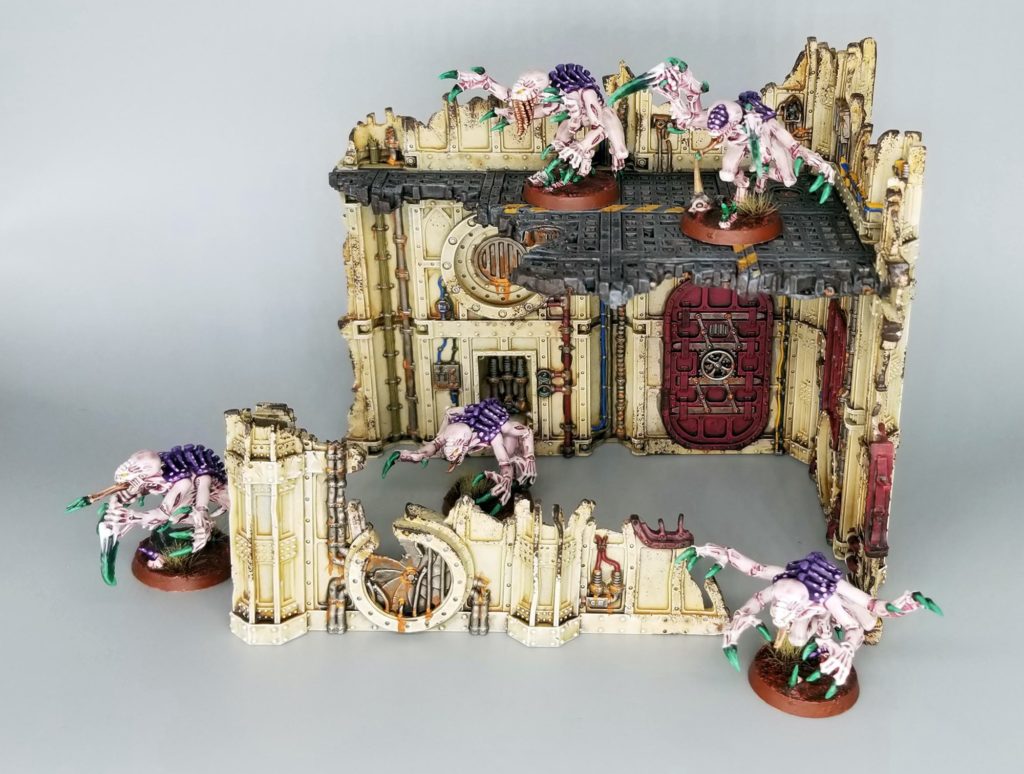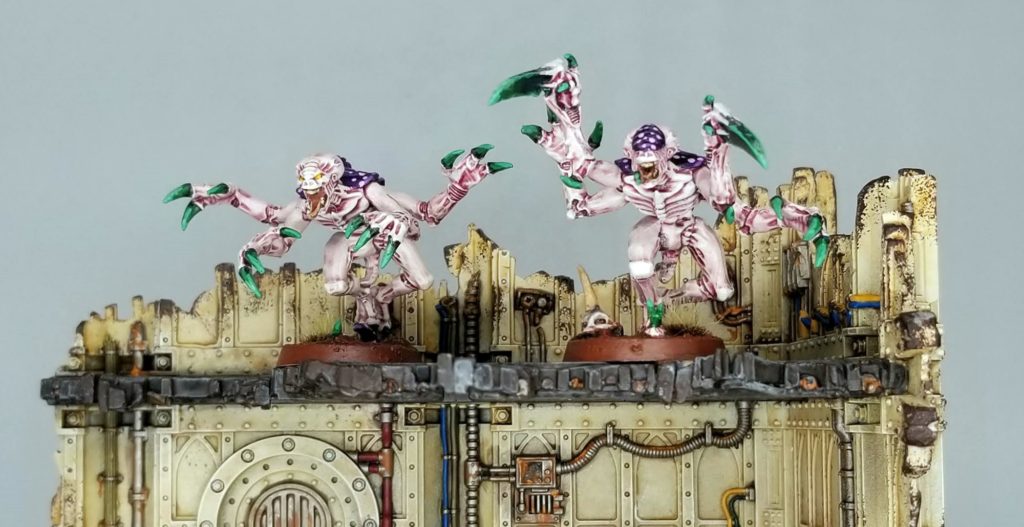Armed with their name (in Romanian, a multi-headed dragon associated with weather manipulation, and pronounced like the “ba” in “bad” plus the word “our” with an L in front of it: “ba-lowr”) and my decision to make Hive Fleet Balaur a splinter fleet of Hive Fleet Leviathan, I noodled about why they were a splinter fleet and what caused their coloration. Dipping into the 8th Edition codex gave me the rest of what I needed to come up with Balaur’s origins.

After the war in Octarius, Hive Fleet Balaur — though not yet called that — was one of several that split off from Hive Fleet Leviathan, using the biomass it had consumed to venture into new territories.
The splinter fleet’s first contact with the Imperium was in the Venenum System (Latin for “poison”), which was anchored by the teeming industrial world of Balaur. Balaur was a wretched hellhole, a hive of factories and chemical plants which transformed the toxic and venomous local flora and fauna into rare and useful acids and other industrial materials.
Most notable among the fauna of Balaur were the Balaur Worms, titanic beasts that looked like a cross between a bat and a crocodile (only much, much larger), their brightly spotted hides warning other creatures to steer clear — much as poison dart frogs once did on Terra.
When the splinter fleet arrived, it probed Balaur in various ways: spore clouds, scouts, tunneling creatures, and so forth. When the end came for Balaur, it came on all fronts at once. The Astra Militarum garrison never stood a chance, and the same was true of the Ultramarines dispatched to Balaur in a last-ditch effort to save the planet.
The splinter fleet consumed all.
And when it left, it teemed with Tyranid organisms bearing the toxic green protrusions and bright spots of Balaur’s dangerous fauna — and its own spin on Leviathan’s adaptation- and swarm-heavy tactics.

Like the many sinuous heads of its namesake, Hive Fleet Balaur tends to begin its assault on several distinct fronts, some subtle and some less so, rather than focusing on any single approach. Once its “heads” have done their work, the “body” follows swiftly, overwhelming the prey world with the numbers and adaptability of its parent fleet, Leviathan.
